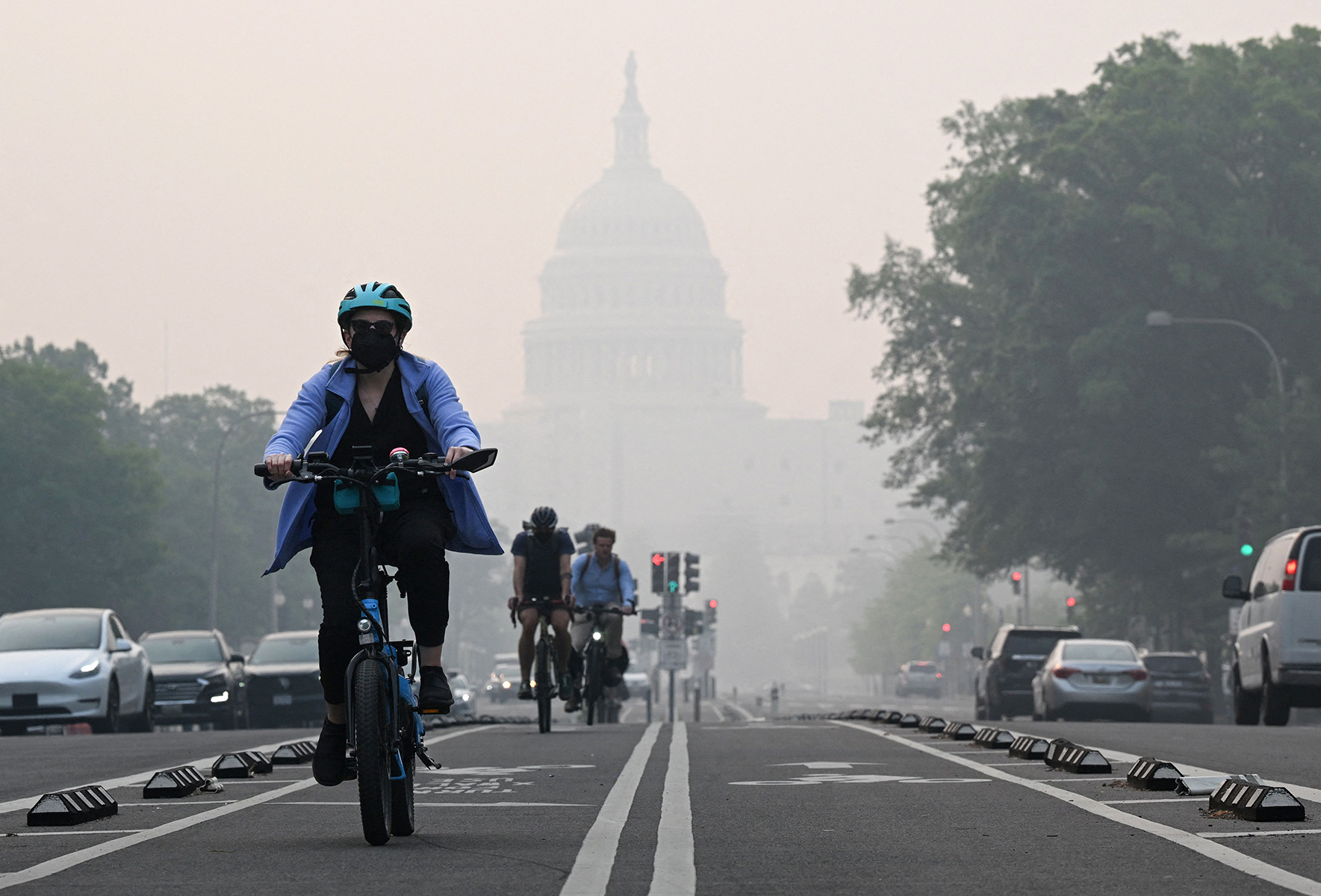Canada wildfires spark climate conspiracy theories
Wildfire smoke coming from more than 430 active wildfires in Canada has engulfed large swaths of the United States, putting millions of Americans and Canadians under air quality advisories and renewing the climate change conversation.
Although environmental experts and federal agencies have attributed the massive fires and ensuing smoke to warm and dry conditions that exacerbated Canada’s wildfire season, which typically runs from May to October, the extreme weather has sparked conspiracy theories that the fires were started by climate change advocates who are using the unhealthy air to push for legislative change.
“I bet a good portion of the wildfires raging across the country were started by green terrorists who want to give their climate change campaign a little boost,” Maxime Bernier, the leader of the far-right People’s Party of Canada, tweeted on Monday. “The far left are experts at inventing and creating crises that they can then exploit.”
Highlighting several arrests that have been made across Canada in recent weeks, Bernier has blamed the wildfires on arsonists. In late April, the Royal Canadian Mountain Police (RCMP) charged two individuals in Alberta with multiple counts of arson.

MANDEL NGAN/AFP via Getty Images
On Twitter, some users claimed that the wildfires were instances of domestic eco-terrorism, arguing that there could not be so many natural fires at the same time and suggesting that they were started intentionally set by activists pushing Canadian Prime Minister Justin Trudeau’s climate change agenda.
“Stop lying. Arson is not Climate change. Canadian fires are being set on purpose. There have been many recent arrests. Some in Canada would burn down the entire country if it helped sell the alleged CC crises. Arsonists aren’t climate change,” one user wrote.
Another user tweeted that the wildfires were “manufactured” to prompt lockdowns and masking requirements similar to those mandated during the COVID pandemic.
Daniel Henstra, a panel expert at the Canadian Climate Institute and professor at the University of Waterloo, told Newsweek that because Canada’s forested areas experience wildfires every year, he was shocked to learn there have been speculations that the wildfires were started deliberately.
“This year the fires are unusually large and burning in more provinces because we had an early spring with hot, dry conditions,” Henstra said. “All it takes is a lightning strike to light the dry, flammable grasses and vegetation. Wind then pushes the wildfire across the landscape, spreading the burn area.”
Henstra debunked the climate conspiracies, saying that the recent fire and smoke are unlikely to lead to any new legislation about climate change despite the media and political attention that the weather has attracted.
Instead, he said the event will probably see more money being directed to wildfire management. In this case, it will mean adopting practices already implemented by places like California, such as using more fire-resistant building materials, building defensive perimeter around homes and developing organized programs and teams to communicate fire spread effectively.
Although California is most often associated with wildfires, Canada has also experienced extreme heat in recent years. In 2021, Canada recorded its hottest day ever after Lytton, British Columbia, tied California’s Death Valley as the hottest place in North America and reached 49.6 degrees Celsius (121 degrees Fahrenheit).
The Canadian prairies, where fires are currently raging, have also been hit particularly hard by droughts seen across the country. The dry weather has created circumstances where a one-degree Celsius increase in temperature can cause a double-digit uptick in the chance of lightning, threatening further fires.


